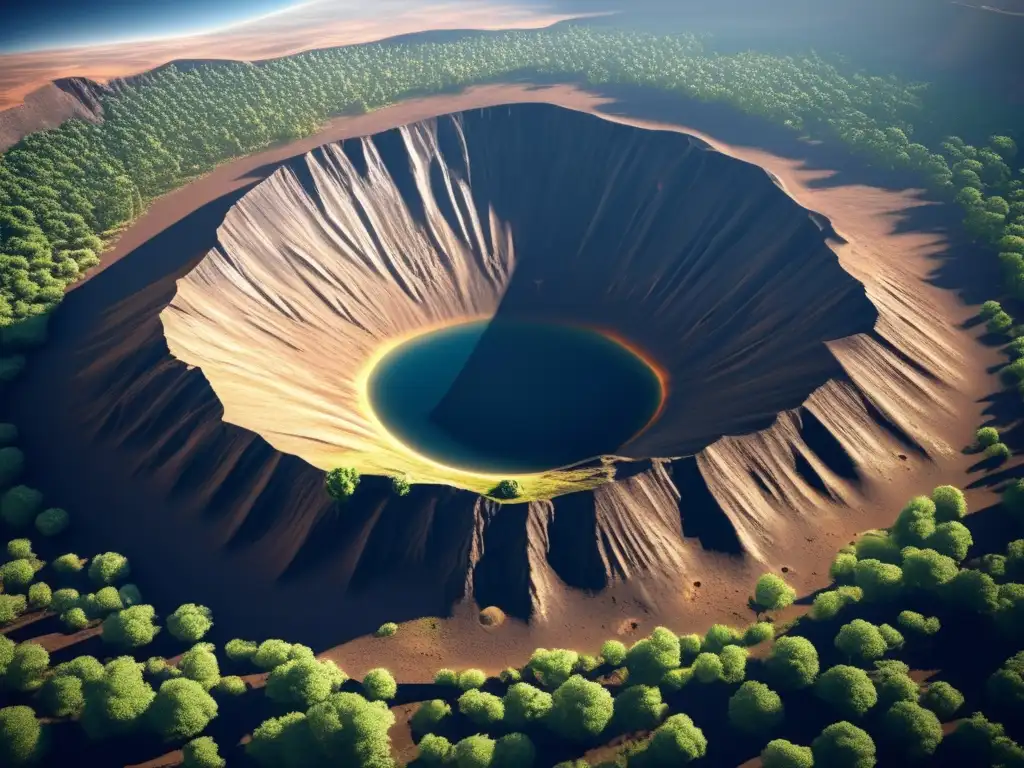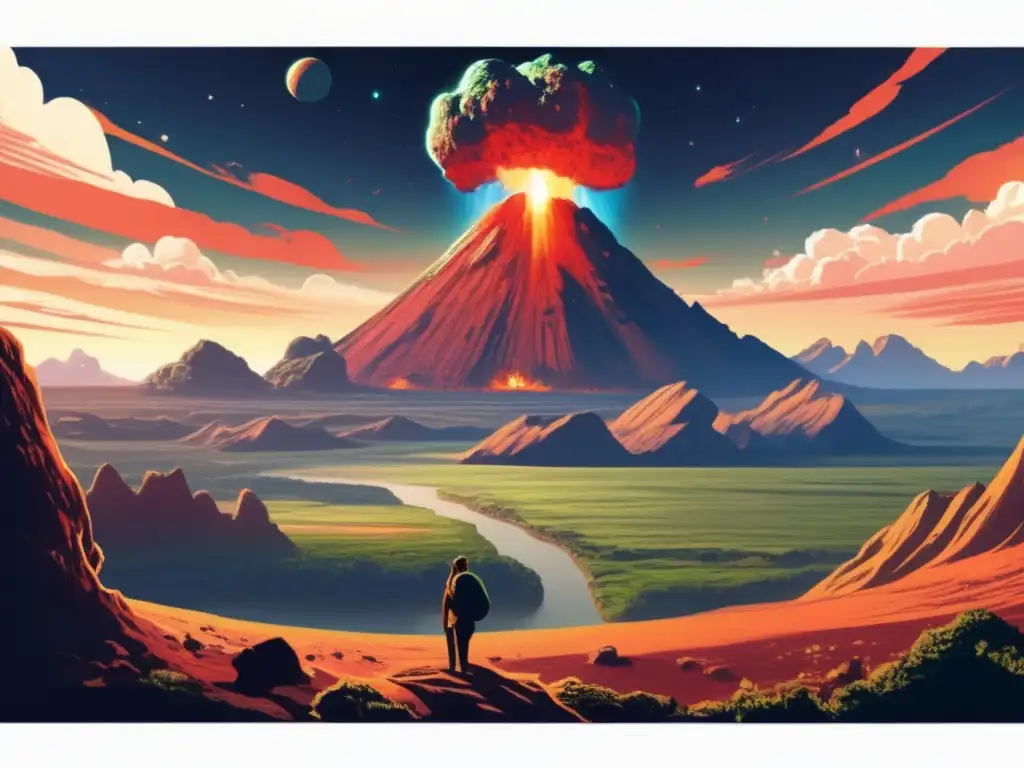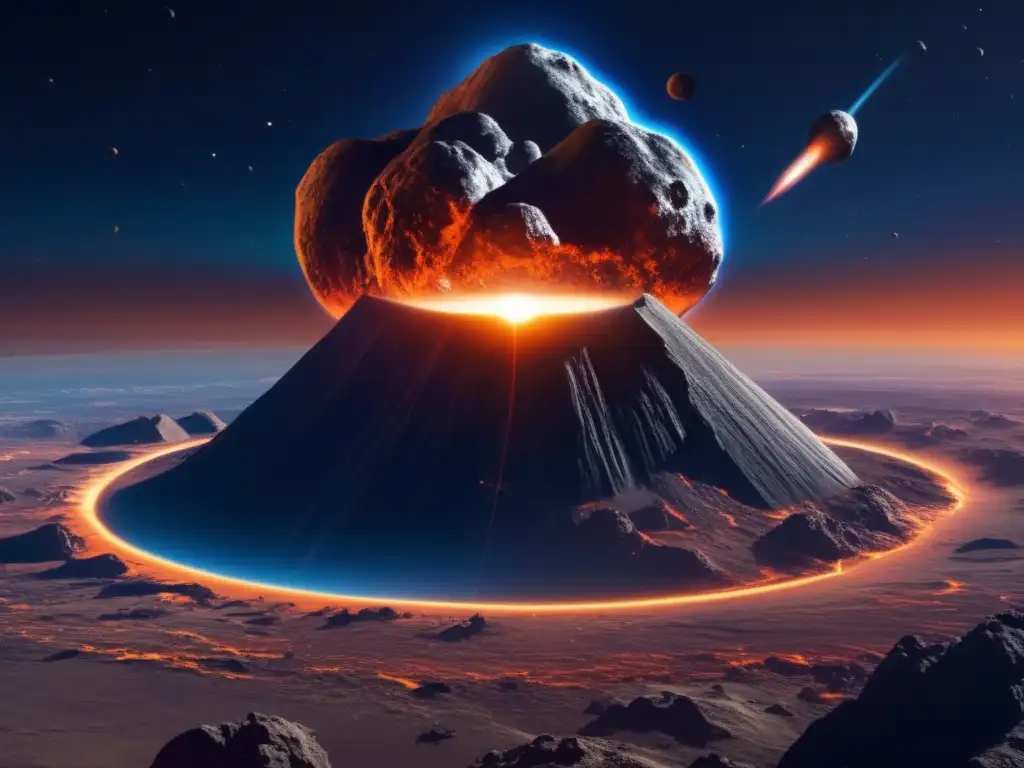Earth's Reshapers: The Influence Of Asteroid Strikes On Landform Evolution

Introduction
Asteroids have long been recognized as potent agents of change in the solar system. These celestial bodies have shaped the history and evolution of planets and moons through their collisions with them. Even Earth has not been immune to this cosmic influence, as evidenced by the numerous impact craters on its surface. However, the effects of asteroid strikes on landform evolution on Earth go beyond creating craters. This article explores the broader impact of asteroids on shaping the planet's geologic features and landscapes.
Impact Processes and Features

Shock Waves and Melting
When an asteroid collides with Earth, the impact generates enormous shock waves that radiate outwards from the point of contact. These waves can cause extreme pressures and temperatures at the impact site, leading to melting and vaporization of both the asteroid and the target rock. Molten rocks can then form crater rims, ejecta blankets, and other impact-related features.
Crater Formation
A common and direct result of asteroid strikes on Earth is the creation of craters. These depressions can range from a few meters to hundreds of kilometers in diameter, depending on the size of the impactor and the target material. Larger craters can also lead to more complex structures, such as central peaks, terraced walls, and peak rings. The age and morphology of craters provide critical information about the geological history and processes of the planet.
Hydrothermal Alteration and Mineralization
The high temperatures generated by asteroid impacts can also induce hydrothermal alteration and mineralization in the target rocks. These processes involve the circulation of hot fluids into the impact zone, causing changes in the chemical and physical properties of the rocks. The minerals formed during hydrothermal alteration can offer insights into the past conditions of the Earth's crust, such as temperature, pressure, and chemical composition.
Large-Scale Landform Evolution

Tectonic Effects
Asteroid strikes can also have significant tectonic effects on the Earth's crust. A massive impact can cause seismic waves that propagate through the planet, leading to tectonic activity and deformation. This process can further create rifts, faults, and other structural features, contributing to the shaping of continents and oceans over time. Additionally, impacts can trigger volcanic activity, leading to the formation of new landforms such as mountains, plateaus, and lava fields.
Climate Change
The effects of asteroid strikes on the environment extend beyond the immediate impact site. Large impacts can lead to massive releases of dust, water vapor, and greenhouse gases into the atmosphere, altering the Earth's climate on a global scale. These changes can persist for years or even decades, affecting weather patterns, temperature regimes, and the overall habitability of the planet. Additionally, impacts can cause sea-level changes, with ocean basins rising and falling depending on the location and size of the impactor.
Erosion and Sedimentation
Over time, the geological features created by asteroid impacts can be eroded and reshaped by various natural processes, such as wind, water, and ice. Sedimentation, or the deposition of loose materials on top of the landforms, can also modify their appearance and properties. These ongoing processes contribute to the ongoing evolution of the Earth's surface features, highlighting the interconnectedness between geological events and environmental factors.
Frequently Asked Questions

-
What is the largest known impact crater on Earth?
The largest confirmed impact crater on Earth is the Vredefort crater in South Africa, estimated to be about 300 kilometers in diameter.
-
Can asteroid strikes cause extinctions?
Yes, asteroid strikes have been implicated in several mass extinctions in the geological history of Earth, including the extinction of non-avian dinosaurs 66 million years ago.
-
Is there a risk of a catastrophic asteroid impact on Earth?
While the probability of a large asteroid strike in the near future is low, it is still a possibility that poses significant risks to human civilization and the planet as a whole. Therefore, efforts to detect and mitigate potential impactors are crucial.
-
Can asteroid impacts create valuable mineral resources?
Yes, some asteroids contain valuable metals and minerals that can be extracted through space mining or other techniques. The study of asteroid composition and geology is therefore of interest to both scientific and commercial communities.
-
How do scientists study past asteroid strikes?
Scientists use various methods to identify and study past asteroid impacts on Earth, including radiometric dating, petrographic analysis, and remote sensing techniques such as satellite imagery and LiDAR scanning.
Conclusion
Asteroid strikes have played a significant role in shaping the evolution of Earth's landforms and landscapes. These cosmic events have caused craters, altered rocks, created tectonic changes, and contributed to climate change. While there are risks associated with asteroid impacts, such events also offer valuable insights into the geological history and processes of our planet. By studying the impact processes and their effects on the Earth, we can better understand the broader context of our place in the solar system and beyond.
Thank you for reading this article on Asteroid Realm. We encourage you to share your thoughts and reactions in the comments section and to explore more topics related to asteroids on our website.
Additional Resources

For further information about the influence of asteroid strikes on landform evolution and related topics, please check out the following resources:
 Shock Waves And Tsunamis: The Ripple Effects Of Asteroid Strikes
Shock Waves And Tsunamis: The Ripple Effects Of Asteroid Strikes Armored Earth: Our Planet's Defenses Against Asteroid Impacts
Armored Earth: Our Planet's Defenses Against Asteroid Impacts Tales Of The Unseen: Uncovering Invisible Impact Craters
Tales Of The Unseen: Uncovering Invisible Impact CratersIf you want to discover more articles similar to Earth's Reshapers: The Influence Of Asteroid Strikes On Landform Evolution, you can visit the Asteroid Impacts category.
Leave a Reply

Articulos relacionados: